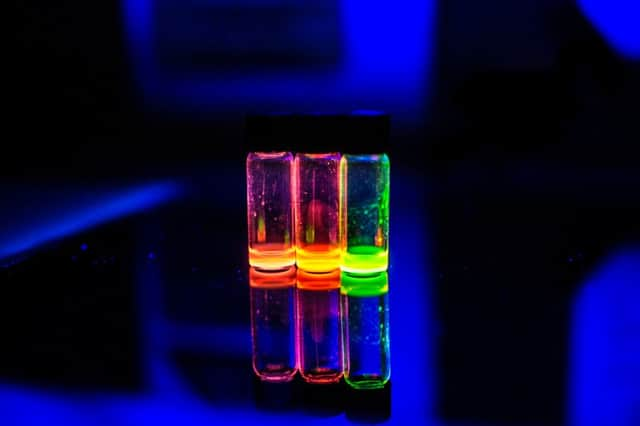Tiny fluorescent crystals help Leeds University scientists understand spread of HIV and Ebola viruses


The findings, offer a new way of treating such viruses: instead of destroying the pathogens, introduce a block on how they interact with cells.
Lead author Dr Yuan Guo, from Leeds University’s Astbury Centre for Structural Molecular Biology said: “Until now, how these viruses attach to cells was a ‘black box’ to chemists. We knew that the viruses were interacting with healthy cells, but the way in which they bound together was still a mystery.”
Advertisement
Hide AdAdvertisement
Hide AdThe researchers used nano-sized crystals, about a millionth of a millimetre in size, called ‘quantum dots’ that mimicked the shape of the viruses and acted as technological stand-ins in experiments to reveal how they bind to cells.
Quantum dots are fluorescent crystals in which the colour of the emitted light is dependent on the size of the crystal. They have emerged as an advanced type of fluorescent probe “for biomolecular and cellular imaging” making them useful for studying how viruses spread.
Using the fluorescence of the quantum dots, the research team were able to illuminate the physical binds that attach them to the cells, also revealing how the viruses would bond. In order to allow the quantum dots to bind to cells, they first had to be coated in sugar – a new technique that was developed at Leeds University for the study.
The study has also revealed the different ways in which two cell surface sugar binding proteins that were previously thought to be almost indistinguishable – called ‘DC-SIGN’ and ‘DC-SIGNR’ – bind to the HIV and Ebola virus surface sugars, thereby spreading the viruses.
The findings were published today in the journal Angewandte Chemie,